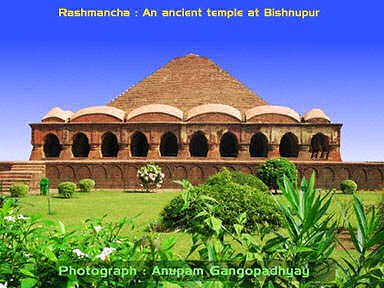
In the Mahabharata, Bankura was described as Suhmobhumi. The word Larh or Rarh was introduced after 6th century A.D. In Santali, lar means thread, rarh means tune and larh means snake. Perhaps the Jain and Greek scholars used this original Austric word Larh to indicate this dry forest region which was very difficult to access that time. The popularity of Manasa Puja, the worship of Snake-Goddess Manasa, proves this opinion might have some relevance.

According to Nilkantha, a famous commentator of the Mahabharata, both the words Suhmo and Rarh, are synonymous. Scholars differs in their opinion about the etymology of the name Bankura. In the words of the Kol-Mundas, orah or rah means habitation. Many places of Rarh are named with the an added rah at the end of the name. One of the most influential God of the district Dharmathakur is called Bankura Roy. The name of the district may come from his name. Linguist Suniti Kumar Chatterjee thinks that the name came from the word Banka (zig-zag), and its word-corruption Banku, which means extremely beautiful, and he who must be worshiped. In 1979, the word “Bancoorah” was found in the map of Renal. In 1863, Gastrel referred this region as Bancoonda.
Bankura has a hoary past with glorious historical heritage. Its historical period is traceable to the sixth century BC, when according to the last Jaina Tirthankara, Mahavira came to the Rarha country. Numerous architectural and sculptural evidence point to the 10th, 11th and 12th centuries AD. The Susunia hill inscription, palalographically belonging to the 4th century AD, refers to Maharaja Singhavarman and his son Chandravarman of Harisen's Allahabad Prasasti. Pushkarna has been identified with Pakhanna, a village of this district. The kingdom of Kotatavi, referred to in Sandhyakar Nandi's "Ramacharita" has been identified with Koteswara of this district. With the rise of Mallas the history of the district entered into the most glorious phase. The Mallas enjoyed the suzerainty under the Mughals and the Bengal Nawabs. Bir Hambir was the greatest ruler of the family. Abul Fazl in his 'Ain-i-Akbari' refers to him as a loyal Zamindar, who helped the Mughals in their expedition against Afgans of Orissa. During his reign Shrinivasa-charya preached Vaishnavism in Mallavbhum under the patronage of the Mallas Bishnupur became a center of temple building activities and classical music with distinctive feature of 'Vishnupur Gharana'. In the mediaeval period there flourished at Chatna, Badu Chandidasa the author of Shi Krishnakirtan. He is looked upon as the greatest humanist of the period. He is one of the great poets of Bengal.



